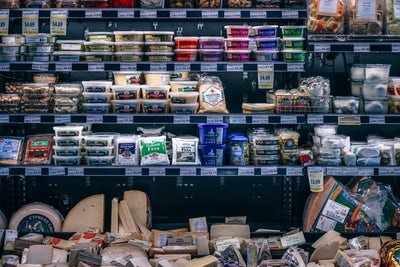FEATURED ARTICLES
- Details
- Written by Lisa Jillanza
Even though sweater and parka weather are upon us, ‘tis the season to sculpt away that unwanted fat… because let’s be honest any season is the perfect time to sculpt away that unwanted fat, right?

To fight fat and sculpt, you need to target your biggest problem areas – like your glutes, thighs, and love handles. Follow these fat-busting moves to get in the best shape this season (or any season!)
Problem – Under arm jiggle.
Solution – Tricep dips.
Sit on the floor or a bench with knees bent at 90 degrees and palms facing out, behind you. Raise your body up and down, dipping your rear until it hovers just above the ground. Keep your elbows pointed straight behind you, and you should feel it in your triceps. Do for 60 seconds and repeat three times.
Problem – Flabby chest
Solution – Push-ups
Doing push-ups for 30 seconds followed by a 15-second hold is the key to scoring a toned chest.
Repeat 3 times. (If you can’t do a traditional push-up, try an incline variation, placing your hands on a bench.)
Problem – Belly fat
Solution – Mountain climbers
Hold a high plank position for 30 seconds, keeping a flat back. Quickly bring right knee to right elbow, then left knee to left elbow in fast movements for 30 seconds.
Problem – Love handles
Solution – Side forearm plank
Start with a traditional forearm plank, elbows under shoulders and forearms parallel, abdominals engaged. Slide your palms toward your centerline so your thumb and forefingers connect. Then stack your left hip on your right, placing your left palm on your left hip. Use your abs and pull your navel to your spine as you press your shins and thighs together. Reach your left (or top) arm up to the sky to open your chest while you press your hip up. Press up 10 times. Repeat on right side.
- Details
- Written by Lisa Jillanza
- Many people do not know that pumpkins are made up of 90 percent water.
- Pumpkins also contain other great nutritional aspects including potassium and vitamin A.
- The bright orange color of pumpkins also tells us that they are a great source of the important antioxidant, beta carotene.

Recipe: Traditional Pumpkin Pie
- 1 ¾ cups (one 15oz. can) unsweetened pumpkin puree
- ¾ cup light brown sugar, packed
- 2 teaspoons ground ginger
- 1 ½ teaspoons ground cinnamon
- ½ teaspoon salt
- 2/3 cup milk
- 2/3 cup heavy cream
- 3 large eggs
- 1 teaspoon vanilla extract
(For crust us a pre-made store bought crust or a homemade crust) In a small heavy saucepan, stir the pumpkin, brown sugar, spices and salt together until mixed. Bring the mixture to a simmer, stirring constantly. Reduce the heat to low and cook, stirring constantly, for 3 to 5 minutes or until thick and shiny. Scrape the mixture into a mixer or food processor for 1 minute. With the motor on, add the milk and cream, mixing until incorporated completely. Add the eggs one at a time, mixing just to incorporate, about 5 seconds after each egg. When you add the last egg, also add the vanilla. Pour the mixture into the prepared pie shell. Bake the pie for 50 - 60 minutes at 375 degrees.
Recipe: Pumpkin Soup
- 6 cups chicken stock
- 1 ½ teaspoons salt
- 4 cups pumpkin puree
- 1 teaspoon chopped fresh parsley
- 1 cup chopped onion
- ½ teaspoon chopped fresh thyme
- 1 clove garlic minced
- ½ cup heavy whipping cream
- 5 whole black peppercorns
Heat stock, salt, pumpkin, onion, thyme, garlic, and peppercorns. Bring to a boil; reduce heat to low, simmer for 30 minutes uncovered. Puree the soup in small batches (1 cup at a time) using a food processor or blender. Return to pan and bring to boil again. Reduce heat to low, and simmer for another 30 minutes, uncovered. Stir in heavy cream. Pour into soup bowls and garnish with fresh parsley.
- Details
- Written by Lisa Jillanza
Rheumatoid arthritis is a debilitating disease for many people. While stress can make the condition much worse for some people, rheumatoid arthritis can also create lots of stress for you as well.

Stress can cause the release of chemicals in your body that will trigger inflammation and pain, therefore making the symptoms of rheumatoid arthritis increased. To de-stress and help alleviate the pain and inflammation caused by rheumatoid arthritis, here are some ways to cut some stress out of your life:
- Exercise
- Breathe deeply
- Talk out the things that are bothering you
- Get organized
- Embrace the outdoors
- Enjoy life
- Details
- Written by Lisa Jillanza
Good fats? Bad fats? You will not find these terms on food labels. Instead you will see words like polyunsaturated and trans fats. This article will give you a brief explanation of the four types of fats (saturated, monounsaturated, polyunsaturated and trans fats) and how they affect your body.

Saturated Fats
Saturated fats are fats that stay solid at room temperature, such as lard, coconut oil and cow butter. Saturated fats are considered “bad fats” because they raise your bad cholesterol level, thereby raising your total cholesterol level. People whose diet consists of many foods high in saturated fats typically are at a higher risk of heart attack, stroke and cardiovascular disease.
Monounsaturated Fats
Monounsaturated fats have a lower melting temperature than saturated fats, which means that they do not stay solid at room temperature. These types of fats can be found in: peanut oil, olive oil, nuts and avocados.
Polyunsaturated Fats
Polyunsaturated fats are fats that can stay liquid even at lower temperatures, such as corn oil and sunflower oil. Polyunsaturated fats are also found in soybeans, fish, fish oil and in grain products.
Dieticians consider polyunsaturated fats the “good fats” as they lower cholesterol and they help prevent cardiovascular disease by lowering the amount of fat in the blood.
Trans Fats
Trans fats are man-made fats that are created during the hydrogenation process. These types of fats are unnatural and toxic to your body. Trans fats are abundant in packaged and processed foods.
Dieticians consider trans fats the “bad fats” as they can cause cancer, diabetes, obesity, birth defects, low birth weight babies, and sterility.
- Details
- Written by Lisa Jillanza
Studies show that 30 to 40 percent of the general population snores… which means there are an awful lot of people out there not getting a good night’s sleep. Whether you snore, or your partner, there are some easy ways to alleviate snoring and catch some zzzz’s before you know it.

Tongue exercises – believe it or not there are exercises that you can do with your tongue that will help “train” your tongue where to stay in your mouth while you are sleeping to prevent snoring. One good tongue exercise to practice is making the “t-t-t-t-t” sound – sort of like you are scolding someone. This strengthens the tip of the tongue. You can also let your tongue hang out relaxed, then tense your tongue by pointing it and holding this position for three seconds.
Buy a mouthpiece – one of the most effective anti-snoring techniques is using a “boil and bite” mouthpiece. These mouthpieces form to your upper and lower teeth and pull your lower jaw and the back of your tongue forward. This process allows your airway to be opened and you to breathe easier.
Wear an air mask – commonly used for severe sleep apnea, a Continuous Positive Airway Pressure (CPAP) mask pushes air into the nasal passages and throat, allowing the airways to be opened. Unfortunately, only 50 percent of users use their machine correctly, as they cannot keep a mask on throughout the night.
Sleep with a tennis ball – say what? Hear us out on this one… because most people snore while sleeping on their back if you provide a barrier between your body and your back while you are sleeping you will be less likely to sleep on your back throughout the night… thereby reducing your snoring. Some people suggest putting a tennis ball in a pocket T-shirt then sleeping with the T-shirt on backwards. You can also put the tennis ball in a fanny pack and then wear that backwards. If you happen to turn onto your back during the night, the ball, whether it is in your shirt or in your fanny pack, will cause discomfort and you will roll onto your side.

